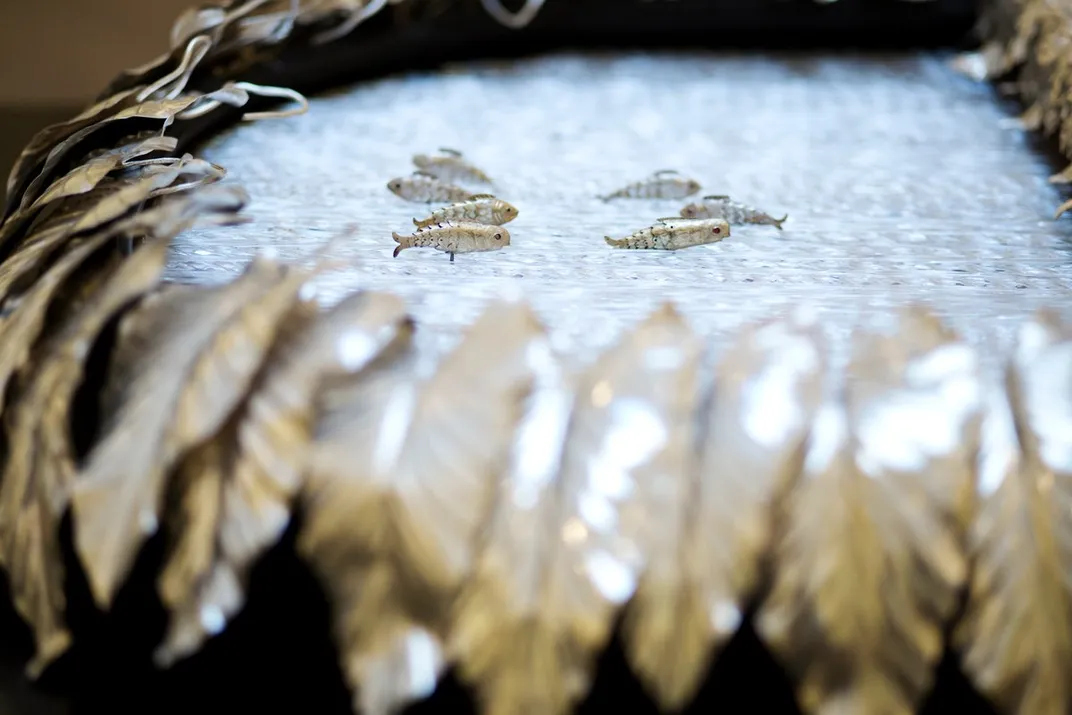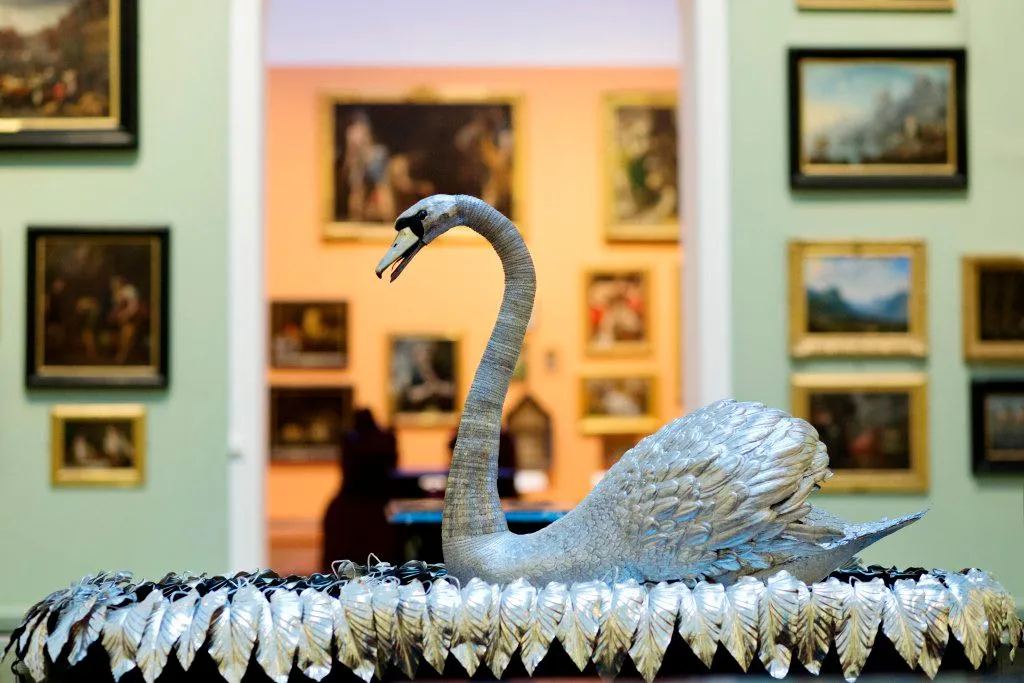This Robotic Silver Swan Has Fascinated Fans for Nearly 250 Years
It preens, fishes and impresses
The legendary silver swan you see above preens, fishes and stuns. It's an automaton that’s almost 250 years old, and it's on the move again, The Guardian's Maev Kennedy reports.
This time, Kennedy writes, the Silver Swan automaton is gliding its way to the Science Museum in London’s new exhibition about robots. Amazingly, this robot dates from 1773—and it’s been attracting astonished crowds ever since the first time it was exhibited. Yes, it’s real silver, the product of Belgian inventor John Joseph Merlin who collaborated with London inventor James Cox on the 18th-century marvel. (Merlin, incidentally, is also responsible for another extraordinary invention: the roller skate.)
The swan usually resides at the Bowes Museum. On its website, the museum explains that the machine gets its graceful motion from three internal clockwork mechanisms. Inside, glass rods rotate when the automaton is wound. A 40-second show follows: The swan swims in a crystal pool, preens, looks about and as a grand finale sees a fish and “eats” it. (Spoiler alert: The fish is actually hidden inside of the swan’s mouth, but it comes out to simulate a catch.)
Its eventual owners, John and Joséphine Bowes, a pair of 19th-century art collectors, bought it for the then-exorbitant price of £200 in 1872 after they spied it on display at the 1867 Paris International Exhibition.
Ever since its creation, it spent time at international events making audiences ooh and aah. Perhaps the swan’s most famous outing is its many trips to the Paris Exhibition—and perhaps its most famous fan was Mark Twain. Samuel Clemens visited Paris in 1867 and like John and Joséphine, he was taken by the creation. He later immortalized the swan in his book The Innocents Abroad, a travel book that caught American audiences’ fancy when it was published two years later.
“I watched a silver swan,” wrote Twain, “which had a living grace about its movements, an a living intelligence in its eyes—watched him swimming around as comfortably and as unconcernedly as if he had been born in a morass instead of a jeweler’s shop.”
Automatons were among the most coveted and impressive pieces of jewelry of their day, in part because they combined both the jeweller’s and the watchmaker’s craft. Historian Silvio A. Bedini describes other incredible specimens of the era, like hydraulic singing birds, robots that played out classical tableaux, grottoes with god-like scenes, and even a spectacular table fountain shaped like a tree complete with silver lions puking up liquor and an automatic angel that blew a trumpet to remind the servants to fill it up when it ran dry. (That bizarrely awesome booze fountain can still be viewed at the Cleveland Museum of Art.)
The Science Museum’s robot exhibit has other cool robots on view, too—from a robotic receptionist to Eric the Robot, which the museum recreated with the help of a crowdfunding campaign. But the silver swan is perhaps the most graceful of the exhibit’s offerings…a reminder that robots can be elegant, aesthetically sophisticated and technologically impressive.
/https://tf-cmsv2-smithsonianmag-media.s3.amazonaws.com/accounts/headshot/erin.png)




/https://tf-cmsv2-smithsonianmag-media.s3.amazonaws.com/accounts/headshot/erin.png)